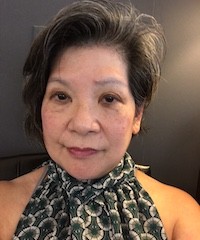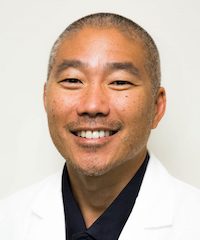The University of Hawai’i John A. Burns School of Medicine Residency Training Program in Obstetrics and Gynecology is located in Honolulu, Hawai’i. The program was originally established in 1949 and is based at Kapi’olani Medical Center for Women & Children with additional rotations at the Queen’s Medical Center and Kaiser Medical Center.
The residency program is fully accredited by the Accreditation Council of Graduate Medical Education and approved for a total of 24 resident positions, six at each level of the four-year program. Six new residents are accepted annually through the NRMP to fill the first-year positions. Residents are accepted at other levels only in the unusual event that one of the positions become available.
Frequently Asked Questions (FAQs)
Case Numbers
Morbity & Mortality Conference
Administration

Ginny Kamikawa – Program Administrator
1319 Punahou Street Suite 824
Honolulu HI 96826
Telephone: 808-203-6518
Fax: 808-955-2174
Email: gkamikawa@hawaiiresidency.org

Mark Hiraoka MD MS – Program Director
Historical Perspective
Development of the Three Year Residency Program
The Department of Obstetrics, Gynecology and Women’s Health began as the Obstetrics and Gynecology Residency Training Program in 1949 at Kapi`olani/St.Francis Hospitals. The training program was the first of its kind in the Hawaiian Island chain and marked an important milestone in State Obstetrics and Gynecological training and care. An independent two year Residency Program was also training residents at Queen’s Medical Center.
Both programs offered one-year positions with no advancement guaranteed. At that time, a resident in OB/GYN was required to have three years of Obstetric and Gynecological training in order to become eligible to sit for the American Board of Obstetrics and Gynecology. But there was no specific level of expertise required within that guideline.
Dr. K.S. Tom, the first Asian American to be certified by the American Board of Obstetrics and Gynecology and Chief of OB/GYN at Kapi`olani and St. Francis Hospitals, integrated the three OB/GYN institutions in order to develop a focused three-year program in OB/GYN. The three-year OB/GYN Residency Training Program was given provisional approval by the ACGME in 1951. This success came on the heels of two important developments: the Residency Review Committee’s decision to terminate all two-year programs in 1950, and the Queen’s Medical Center agreement to join the Kapi`olani-St.Francis Program.
Program Director
It was in 1962 during a program inspection by Dr. Ralph Benson, University of Oregon Department Chair, that the hiring of a Program Director was first proposed. Dr. John A. Krieger, who had recently moved to Honolulu from Dover, Delaware, became the first Residency Program Director. Dr. Krieger developed a stronger curriculum, re-organized the teaching staff , and implementing changes such as residents being integrally involved with patient care. Dr. Krieger also developed the Visiting Professor Program. At that time visiting professors would stay four weeks, giving didactic sessions and demonstrating surgical technique. The Visiting Professor Program continues, although the time commitment has been reduced.
Rotations with Mainland Institutions
It became clear during 1962 that additional staffing was necessary to effectively maintain excellent OB/GYN care because of the large number of deliveries covered by the residents. To remedy the situation, Dr. Benson initiated a rotation of residents from the University of Oregon. That rotation persisted until 1974 when the University of Hawaii program became large enough to care for all patients.
A visiting Professor in 1968, Dr. Warren Pearse of the University of Nebraska started a resident rotation similar to the Oregon rotation. That rotation lasted until Dr. Pearse moved away from Nebraska in 1971.
A Medical School is Born
In 1965, after much effort by key supporters, the Hawai’i state legislature approved the development of a two-year medical school. Dr. Windsor Cutting was selected as the first Dean. He brought with him two outstanding scientists, Dr. Terrance Rogers and Dr. Robert Noyes. Dr Noyes, an OB/GYN physician, was given the position of Professor of Anatomy and Reproductive Medicine. His office was in the Mary Foster wing of Kapi`olani Hospital. Dr. Noyes began active involvement with resident research and training and replaced Dr. Krieger as the Program Director in 1966. Dr. Noyes remained at the University of Hawai`i until 1976 when Dr. Rogers was named Dean following the death of Dr. Cutting. During that same year, Dr. Satori Nishijima was asked to serve as Interim Chair of the section of Obstetrics and Gynecology. Drs. Ralph Hale and Charles Odom served as part-time faculty members.
In 1972 the legislature approved an expansion of the Medical School to a four year program. Dr. Ralph Hale was named Dean of Student Affairs and assigned the duty of developing a curriculum for students in Obstetrics and Gynecology. The Department of Obstetrics and Gynecology was to be developed with Dr. Hale and Dr. Odom as faculty. In 1972, Dr. Hale was named the Program Director, and the Residency Training Program officially became the University of Hawai`i Department of Obstetrics and Gynecology Residency Training Program. Dr. Hale was named the first Chair of the Department of Obstetrics and Gynecology. In 1973, the first four-year class was admitted to the Medical School and graduated successfully in 1975. Problem Based Learning (PBL), the most significant curricular change for medical students and one which proved to be a great success, started in 1989.


